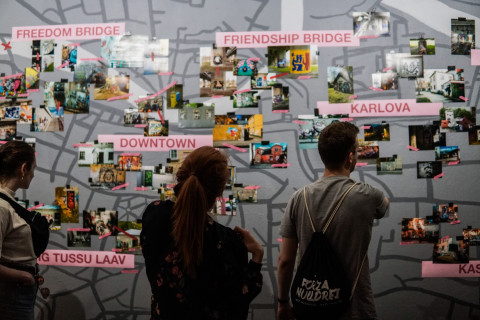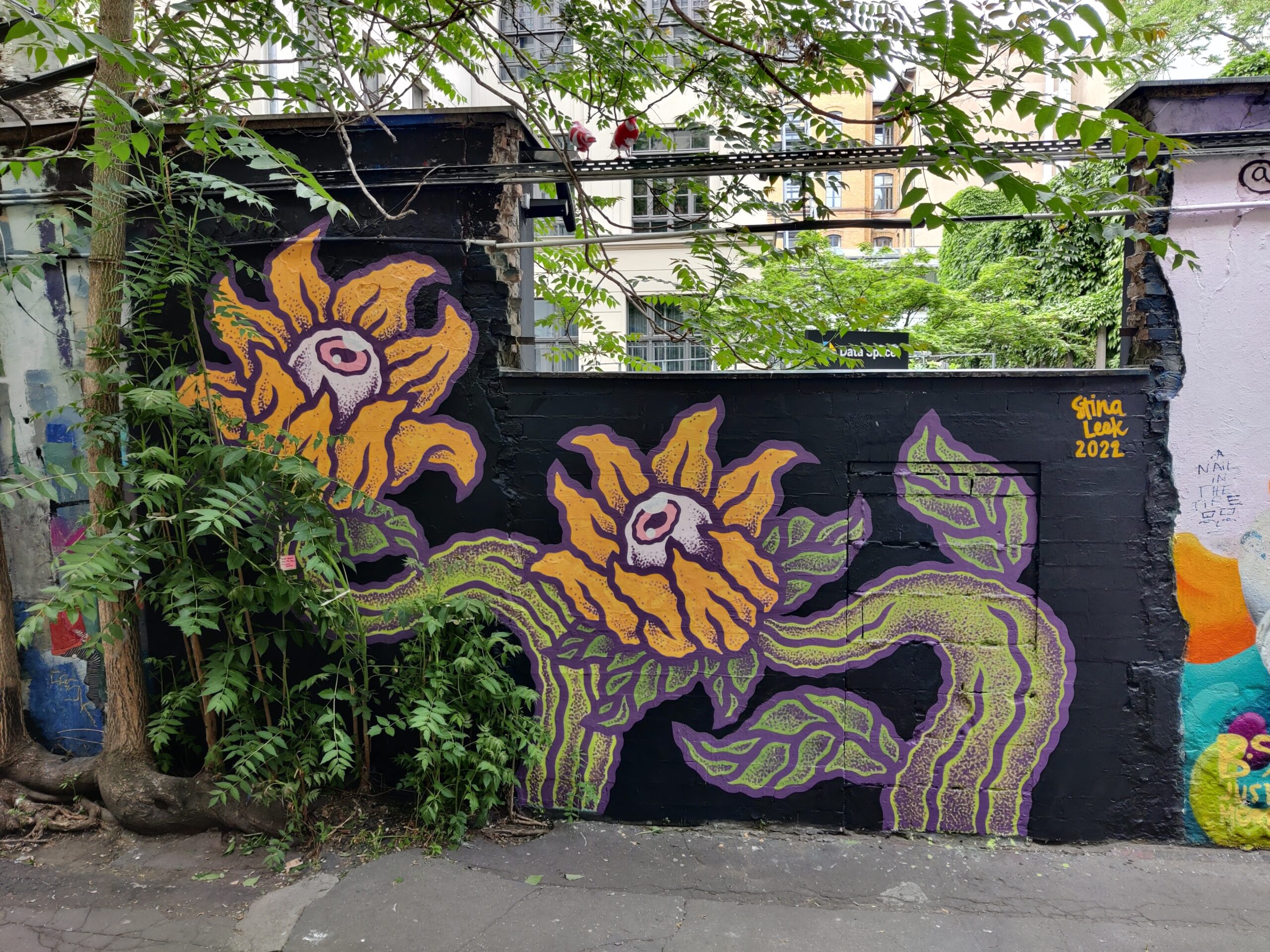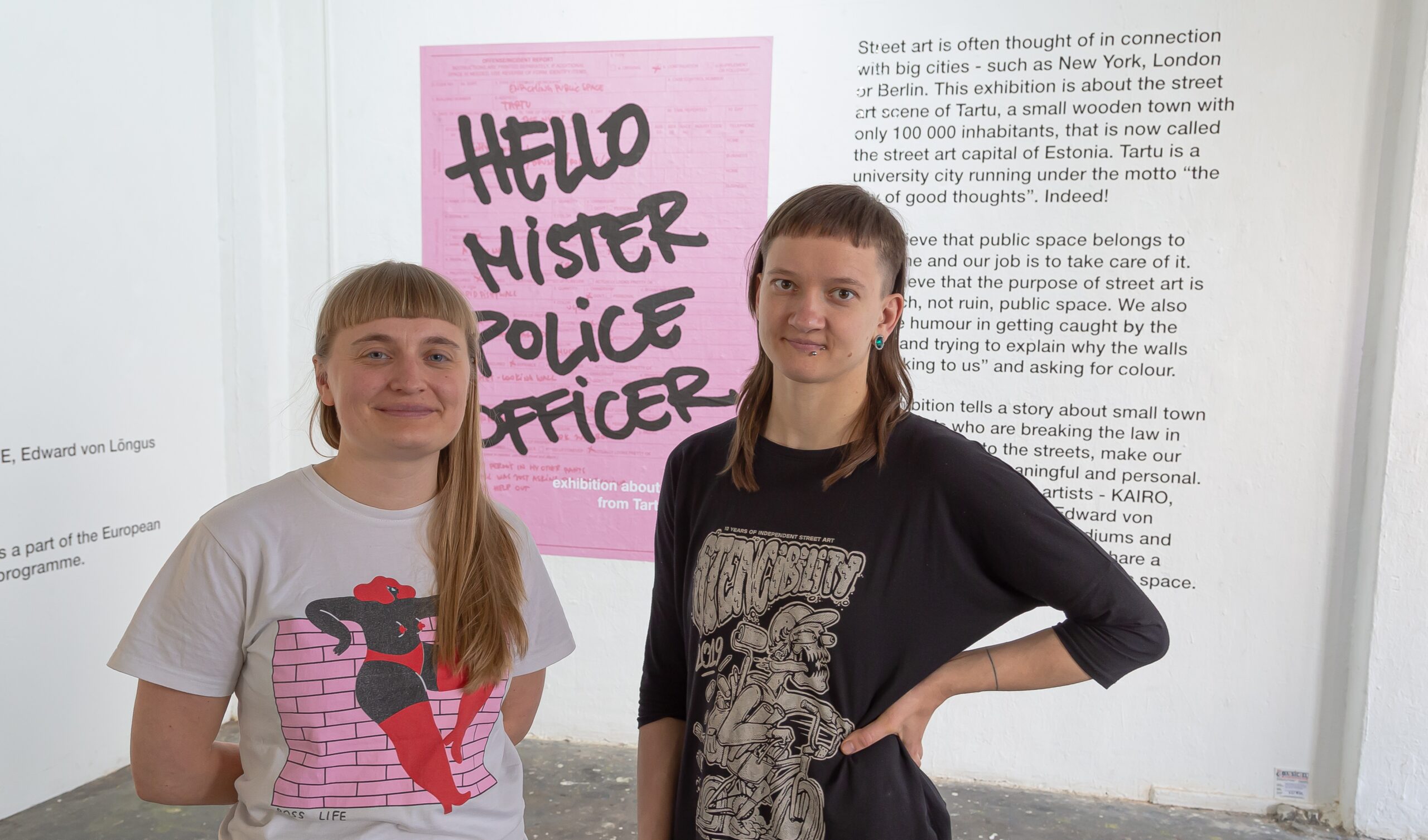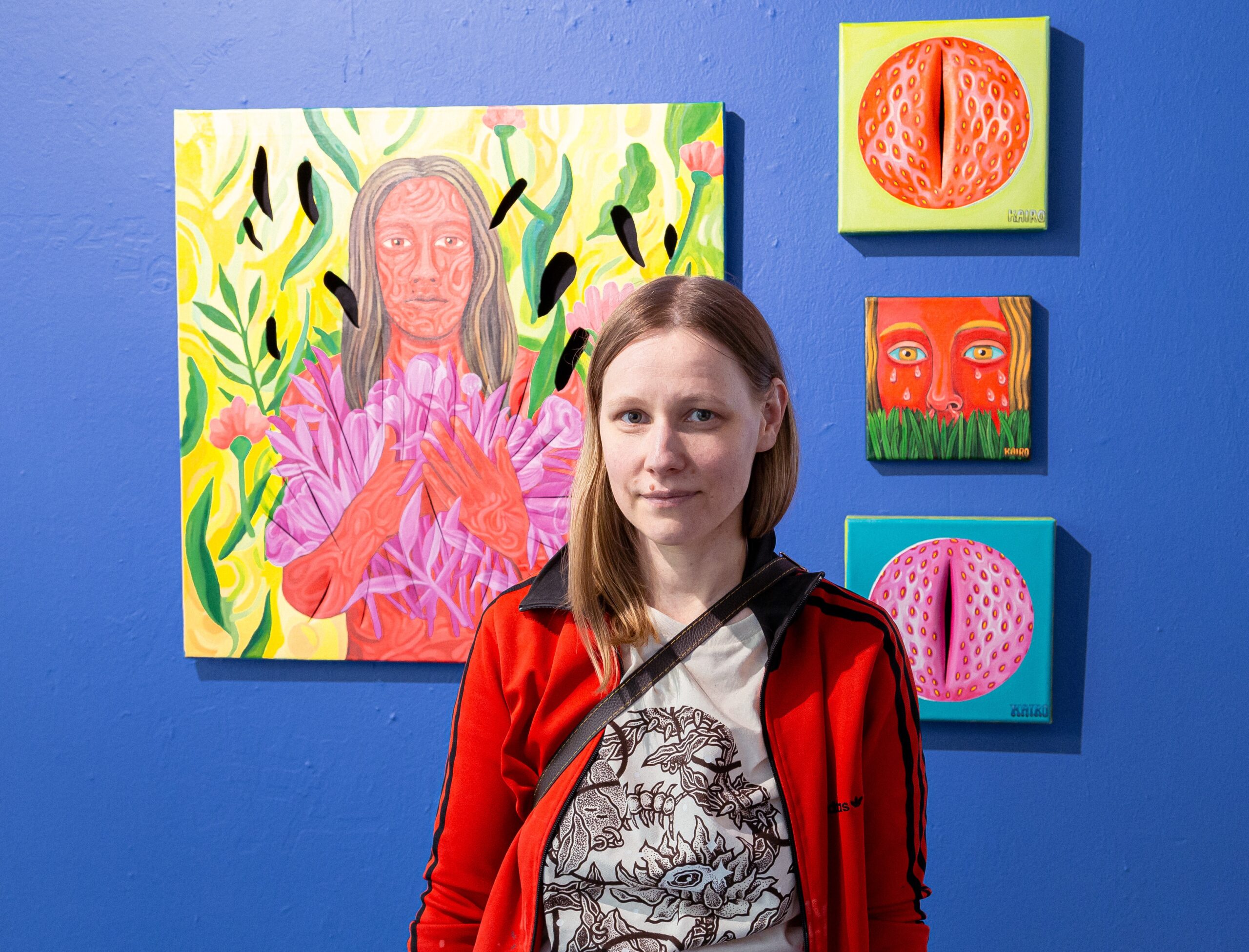
photo: © estonianworld.com
2024 might be two years away, but street artists Kadri Lind and Sirla from the Estonian city of Tartu have already kicked off a series of international celebrations under the banner #Tartu2024 European Capital of Culture with their street art exhibition, “Hello Mister Police Officer”, now on display at the Neurotitan Gallery in Berlin-Mitte.
For the next three weeks, street art enthusiasts can explore Tartus’ affinity for stencils, paste-ups, graffiti and stickers in the heart of the German capital. The exhibition, “Hello Mister Police Officer”, which opened 4 June and runs until 25 June, is the first in a series of events within the European Capital of Culture Tartu 2024 main programme.
Sirla, the founder of the Tartu-based street art festival “Stencibility”, usually brings artists from all over the world to Tartu. “But this year, with the project ‘Stencibility goes Europe’, we bring Tartu to the world”, she says.
Merit Kopli, Estonia’s cultural attaché in Berlin, is equally as excited to see some of Estonia’s most renowned street artists in Berlin: “It makes sense to invite these four artists from the Estonian capital of street art to Berlin, which plays an important cultural role in Europe. The exhibition at Neurotitan Gallery is also the perfect starting point for European Capital of Culture Tartu. I think it is cool to have something more on the alternative side starting off this important time.”
Two of the artists featured in the exhibition, Edward von Lõngus and KAIRO, have been in the street art scene for years. In 2017, Edward von Lõngus left his mark in front of the Estonian embassy in Berlin, as well as at the Teufelsberg and other places. KAIRO, who calls herself a naive artist, has recently been influenced by the war in Ukraine and is manifesting that influence through a technique of slashing and cutting her artwork. Meanwhile, Stina Leek and GUTFACE may be newer creators but are no less skilled in their approach to large murals with a unique twist and poignant message.
We wanted a mixture of established and newer artists, says Lind.
The exhibition itself not only showcases some of Tartus’ best work but also tells the city’s story, capturing its love of street art which has, as one version of the story goes, its roots in Berlin when Estonian artists became obsessed with the raw, unsanctioned artworks on the streets and decided to bring that ethos back to Tartu in the mid-1990s. Since then, street art has become a vivid way of communicating for artists in Tartu.
Sirla, who spent a semester in Berlin during her studies a few years back, says: “The diversity in Berlin has influenced me a lot as an artist. When I returned to Tartu, the Freedom Bridge had just opened and I saw a little stencil on that brand new bridge and I thought how cool it would be to add my own. Now it is one of the most popular spots for street art, and I think that is great.”
While street art is not meant to vandalise public space, artists believe that those spaces belong to everyone, and it is, therefore, everyone’s duty to take care of them. “In our manifesto, we state that the purpose of street art is to enrich public space, not to ruin it. We want to add to the urban landscape in a positive way,” says Kadri Lind.
To be sure, however, sometimes law enforcement has a different opinion. “The title ‘Hello Mister Police Officer’ comically plays with a problem that street artists often encounter – the police. In Tartu, police officers are usually quite reasonable. They ask if you have permission and hear you out if you explain that this wall just spoke to you and gave permission for art”, says Stina Leek, the designer of the exhibition. “But they don’t always understand,” she adds.
In 2023, the exhibition will be shown in Poland before eventually reaching Tallinn in 2024. For their hometown, Tartu, Kadri Lind and Sirla have special plans for 2024. They have already started collecting thousands and thousands of stickers from other artists which they plan to cover a city bus with and subsequently drive around Tartu.
Their own van, the Slapstickervan, serves as a sort of proof-of-concept, as it is already covered with stickers.
Neurotitan Gallery is a non-commercial gallery for diverse mediums including street art, comics, illustrations, screen printing and more. It is situated in the Schwarzenberg Haus near the famous Hackesche Höfe in central Berlin. The gallery shares a building complex with the Anne Frank Center and other cultural institutions and stands as one of the most famous spots for street artists. The staircase leading up to the second floor of the Schwarzenberg Haus is adorned with stencils, stickers and graffiti, effectively offering the perfect introduction to the exhibition “Hello Mister Police Officer”.
In 2019, Tartu won a competition to become the European Capital of Culture 2024 – along with Bad Ischl in Austria and Bodø in Norway. The European Capital of Culture has been chosen since 1985. It has become one of the European Union’s most significant undertakings in the cultural field, which provides cities and towns with additional funding, encourages them to set long-term goals and increases tourism.


